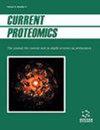隐丹参酮对MDA-MB231细胞线粒体代谢的有效抑制:蛋白质组学分析
IF 0.5
4区 生物学
Q4 BIOCHEMICAL RESEARCH METHODS
引用次数: 0
摘要
三阴性乳腺癌(TNBC)是一种浸润性乳腺癌亚型,其症状预后不良,靶向治疗选择有限。TNBC代谢状态变化的证据,其特征是糖酵解、线粒体氧化磷酸化以及三羧酸循环中间体的产生和利用增加。研究隐丹参酮处理MDA-MB-231细胞后蛋白的改变,探索隐丹参酮处理的关键途径和特异性分子标记。我们使用未标记的定量蛋白质组学来深入了解隐丹参酮对MDA-MB231三阴性乳腺癌细胞的抗癌机制。流式细胞术检测细胞凋亡及线粒体膜电位变化。我们发现,抑制电子传递链复合体蛋白的表达,也抑制线粒体氧化磷酸化。此外,核糖体生物发生途径的下调被发现抑制细胞代谢。综上所述,隐丹参酮可通过有效抑制细胞代谢,引发MDA-MB-231细胞快速且不可逆的凋亡。本文章由计算机程序翻译,如有差异,请以英文原文为准。
Effective inhibition of mitochondrial metabolism by Cryptotanshinone in MDA-MB231 cells : A Proteomic Analysis
Triple-negative breast cancer (TNBC) is a subtype of invasive cancer in breast with the symptoms of unfavourable prognosis and limited targeted treatment options. Evidence of changes in the metabolic status of TNBC, characterised by increased glycolysis, mitochondrial oxidative phosphorylation, as well as production and utilization of tricarboxylic acid cycle intermediates.
Investigate the proteins altered in cryptotanshinone treated MDA-MB-231 cells and explore the key pathways and specific molecular markers involved in cryptotanshinone treatment.
We use unlabeled quantitative proteomics to gain insight into the anticancer mechanism of cryptotanshinone on MDA-MB231 triple negative breast cancer cells. And flow cytometry was used to detect apoptosis and changes in cell mitochondrial membrane potential.
We show that inhibiting the expression of electron transport chain complex proteins, also inhibits mitochondrial oxidative phosphorylation. Additionally, down-regulation of the ribosime biogenesis pathway was found to inhibit cell metabolism.
In summary, results show that cryptotanshinone can trigger rapid and irreversible apoptosis in MDA-MB-231 cells through effectively inhibiting cell metabolism.
求助全文
通过发布文献求助,成功后即可免费获取论文全文。
去求助
来源期刊

Current Proteomics
BIOCHEMICAL RESEARCH METHODS-BIOCHEMISTRY & MOLECULAR BIOLOGY
CiteScore
1.60
自引率
0.00%
发文量
25
审稿时长
>0 weeks
期刊介绍:
Research in the emerging field of proteomics is growing at an extremely rapid rate. The principal aim of Current Proteomics is to publish well-timed in-depth/mini review articles in this fast-expanding area on topics relevant and significant to the development of proteomics. Current Proteomics is an essential journal for everyone involved in proteomics and related fields in both academia and industry.
Current Proteomics publishes in-depth/mini review articles in all aspects of the fast-expanding field of proteomics. All areas of proteomics are covered together with the methodology, software, databases, technological advances and applications of proteomics, including functional proteomics. Diverse technologies covered include but are not limited to:
Protein separation and characterization techniques
2-D gel electrophoresis and image analysis
Techniques for protein expression profiling including mass spectrometry-based methods and algorithms for correlative database searching
Determination of co-translational and post- translational modification of proteins
Protein/peptide microarrays
Biomolecular interaction analysis
Analysis of protein complexes
Yeast two-hybrid projects
Protein-protein interaction (protein interactome) pathways and cell signaling networks
Systems biology
Proteome informatics (bioinformatics)
Knowledge integration and management tools
High-throughput protein structural studies (using mass spectrometry, nuclear magnetic resonance and X-ray crystallography)
High-throughput computational methods for protein 3-D structure as well as function determination
Robotics, nanotechnology, and microfluidics.
 求助内容:
求助内容: 应助结果提醒方式:
应助结果提醒方式:


